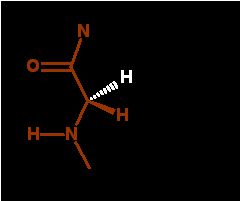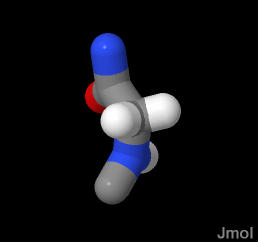



Lack of a β-Carbon: the only common amino acid that is NOT chiral, gives this amino acid considerably more flexibilty that all others, therefore a much larger area of the phi/psi plot is available. (more on this later)
It is frequently found in β-turns where its flexibilty is required. Infrequently found in a α-helix since its flexibilty gives it more degrees of freedom.
in the demonstration below, the highlighted glycine is part of a β-sheet just prior to where a β-turn begins. It is buried inside the protein away from water in this case
  Atom Label Description | |
|
Click an atom to diplay it's identity here | |
|
Messages about the currently highlighted features |